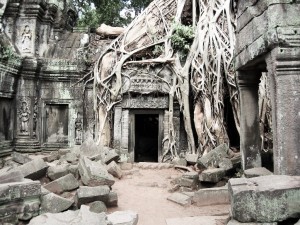Case Study: Moriyama House / Ryue Nishizawa
Reading Text: Cooking, Yo-ing, Thinking / Sanford Kwinter
Japanese architect, Ryue Nishizawa, has a new outline of private and community living with The Moriyama House which is a flexible-format of minimalism. The house is a perfect example of a home designed like a community while connecting the inside and outside. Located in the suburbs of Tokyo, this modern architectural concept presents a multi-building residence comprising a concentration of ten separate cuboids, ranging from 1 to 3 stories high, where every room is a building by itself and the space between the buildings form a passage or garden.
The freedom of using a space is given to the clients which will be used as a residence or rental rooms. The architect breaks from the conventional housing typology to a more organized space forming clusters. It also moves away from the traditional Japanese courtyard type house to form a series of small buildings and gardens – creating a disturbed relational logic where the buildings and the nature form a mature tangible interrelationship.
This concept is also explained by Sanford Kwinter in his article. He writes about the complex relation between man and nature. He strongly justifies that the common perception of nature by the society being a separate entity is a misconception. He has supported his belief with a lot of elaborately described examples. He states that man in merely not an actor in nature but an integral part of it. He emphasizes that computer- man’s prized creation is not merely a tool but a very important interactive medium which can change the way we understand or sense nature. He also highlights that the society has to progress alongside innovation in technology. Over all the article supports that digitizing the world can be more productive and that we should not treat computers differently and it should form an integral part of nature and society.
Image on the right: Angkor-wat Ruins ,Title: Nature has a way to incorporate us even if we don’t want to.
Image courtesy: www.tarigna.net
I believe architecture is the most mature and advanced form of human ingenuity. The timeless appeal of architecture transcends cultures and generations. Historical eras and civilizations can clearly be identified by their distinct architectural patterns, which serve as icons of a bygone era.
In modern day computers have helped us to realize more complex scenarios, making room for more advance systems of architecture. The early ancient relation we had with nature which got lost in modern times is re-emerging again. Our societies more than ever wants to be integrated with nature.
I am of the opinion that more connections we build with nature the better our world can be. Computers have given us the power to let our imagination run riot. But we shouldn’t be completely dependent on technology. It shouldn’t overpower human thinking and creativity.
Buildings should be emblematic of their era and cities should evolve and age gracefully. Technology is the biggest drive in defining new spaces. Hence I am driven by the desire to develop a coherent schema of architectural design by incorporating design elements from the past and melding it with modern conveniences to address modern days growing demand of interacting with nature and technology.
References: http://www.wohnmodelle.at
http://openbuildings.com
